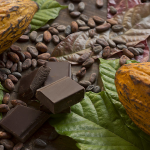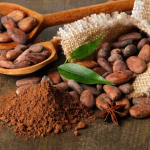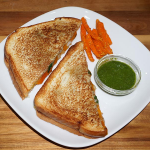Decaffeinated coffee, often affectionately called “decaf,” has long been a source of debate among coffee lovers. While some embrace it for its ability to provide the comforting ritual of coffee without the caffeine jitters, others dismiss it as a flavourless imposter. But is decaf truly a compromise? Let’s dive into the world of decaffeination, explore the different methods, and uncover the truth about its impact on flavour.
Why Decaf?
Before we delve into the how, let’s address the why. There are many reasons why people choose decaf:
- Caffeine Sensitivity: Some individuals are sensitive to caffeine and experience adverse effects like anxiety, insomnia, or digestive issues.
- Health Concerns: Pregnant or breastfeeding women, people with certain medical conditions, and those taking specific medications may need to limit or avoid caffeine.
- Evening Enjoyment: Decaf allows coffee lovers to enjoy a cuppa in the evening without disrupting sleep.
Unveiling the Decaffeination Methods:
Solvent-Based Methods:
- Direct Solvent Process: This older method involves steaming green coffee beans and then rinsing them with a solvent (often methylene chloride or ethyl acetate) to extract the caffeine. While effective, concerns have been raised about solvent residues.
- Indirect Solvent Process: Similar to the direct method, but the beans are soaked in water before solvent exposure. This reduces the amount of solvent used but doesn’t eliminate it entirely.
Swiss Water Process:
- A chemical-free method that uses water and osmosis to remove caffeine. Green coffee beans are soaked in a caffeine-saturated solution, which draws out the caffeine while leaving other compounds intact. This is often considered the most flavour-preserving method.
Carbon Dioxide (CO2) Process:
- This method uses liquid CO2 under high pressure to extract caffeine. It’s considered safe and efficient, with minimal impact on flavour.
The Flavour Factor:
Decaf often gets a bad rap for being bland or lacking the complexity of regular coffee. But is this reputation deserved? The truth is, the flavour of decaf largely depends on the decaffeination method and the quality of the original beans.
- Solvent-based methods: Can sometimes strip away some of the coffee’s delicate flavours and aromas, resulting in a slightly muted taste. However, advancements in technology have improved these processes.
- Swiss Water Process: Often praised for preserving the coffee’s original flavour profile, resulting in a decaf that closely resembles its caffeinated counterpart.
- CO2 Process: Similar to the Swiss Water Process, this method typically yields a flavourful decaf with minimal loss of aroma or taste.
Choosing Your Decaf:
When selecting decaf ground coffee or coffee beans, look for information about the decaffeination method on the label. If flavour is a top priority, consider beans decaffeinated using the Swiss Water or CO2 Process. Additionally, choose high-quality beans from reputable roasters to ensure the best possible taste.
Brewing Tips for Decaf:
- Use Freshly Ground Beans: Grind your beans just before brewing for optimal flavour.
- Water Temperature: Slightly higher water temperature (around 200°F or 93°C) can help extract more flavour from decaf coffee.
- Experiment: Try different brewing methods like pour-over, French press, or AeroPress to see which one you prefer.
The Final Word:
Decaf coffee has come a long way since its early days. With improved decaffeination methods and a focus on quality, you can now enjoy a delicious and satisfying cup of coffee without the caffeine kick. Don’t be afraid to experiment with different brands and methods to find the perfect decaf that suits your taste.
Whether you’re a caffeine-sensitive coffee lover or simply seeking an evening brew, decaf offers a flavorful and enjoyable alternative. So, ditch the stereotypes and embrace the world of decaf with an open mind and a discerning palate.











